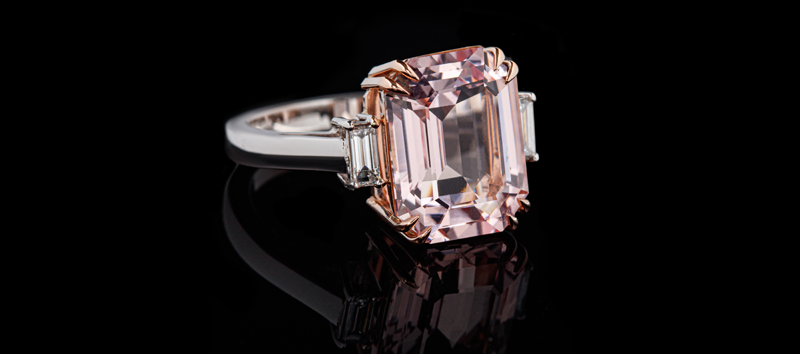Introduction to Lab Grown Diamonds
In recent years, lab grown diamonds have emerged as a popular alternative to natural diamonds. But what exactly are lab grown diamonds, and how are they made?
What are Lab Grown Diamonds?
Lab grown diamonds, also known as synthetic or cultured diamonds, are created in controlled environments that mimic the natural conditions under which diamonds form in the Earth’s crust. These diamonds have the same chemical composition, crystal structure, and physical properties as natural diamonds but are produced in a matter of weeks instead of millions of years.
How are Lab Grown Diamonds Made?
Lab grown diamonds are typically produced using two main methods: High Pressure High Temperature (HPHT) and Chemical Vapor Deposition (CVD). HPHT simulates the high pressure and temperature found deep within the Earth’s mantle, while CVD involves the deposition of carbon atoms onto a substrate in a vacuum chamber.
Advantages of Lab Grown Diamonds
Lab grown diamonds offer several advantages over their natural counterparts.
Cost-effectiveness
One of the primary benefits of lab grown diamonds is their cost-effectiveness. Since they can be produced in a controlled environment, the cost of production is significantly lower than that of mining natural diamonds, making lab grown diamonds more affordable for consumers.
Ethical Considerations
Another advantage of lab grown diamonds is their ethical sourcing. Unlike natural diamonds, which may be associated with unethical mining practices and human rights abuses, lab grown diamonds are produced ethically and are free from the environmental and social concerns often associated with diamond mining.
Environmental Impact
Lab grown diamonds also have a lower environmental impact compared to natural diamonds. Diamond mining can result in deforestation, habitat destruction, and pollution, whereas lab grown diamonds require minimal land use and produce fewer greenhouse gas emissions.
Quality and Characteristics of Lab Grown Diamonds
Despite being created in a laboratory, lab grown diamonds exhibit the same quality and characteristics as natural diamonds.
Physical Properties
Lab grown diamonds have the same hardness, brilliance, and fire as natural diamonds, making them indistinguishable to the naked eye.
Chemical Composition
The chemical composition of lab grown diamonds is identical to that of natural diamonds, consisting of pure carbon arranged in a crystalline structure.
Introduction to Lab Grown Diamonds
In recent years, lab grown diamonds have emerged as a popular alternative to natural diamonds. But what exactly are lab grown diamonds, and how are they made?
What are Lab Grown Diamonds?
Lab grown diamonds, also known as synthetic or cultured diamonds, are created in controlled environments that mimic the natural conditions under which diamonds form in the Earth’s crust. These diamonds have the same chemical composition, crystal structure, and physical properties as natural diamonds but are produced in a matter of weeks instead of millions of years.
How are Lab Grown Diamonds Made?
Lab grown diamonds are typically produced using two main methods: High Pressure High Temperature (HPHT) and Chemical Vapor Deposition (CVD). HPHT simulates the high pressure and temperature found deep within the Earth’s mantle, while CVD involves the deposition of carbon atoms onto a substrate in a vacuum chamber.
Advantages of Lab Grown Diamonds
Lab grown diamonds offer several advantages over their natural counterparts.
Cost-effectiveness
One of the primary benefits of lab grown diamonds is their cost-effectiveness. Since they can be produced in a controlled environment, the cost of production is significantly lower than that of mining natural diamonds, making lab grown diamonds more affordable for consumers.
Ethical Considerations
Another advantage of lab grown diamonds Guides is their ethical sourcing. Unlike natural diamonds, which may be associated with unethical mining practices and human rights abuses, lab grown diamonds are produced ethically and are free from the environmental and social concerns often associated with diamond mining.
Environmental Impact
Lab grown diamonds also have a lower environmental impact compared to natural diamonds. Diamond mining can result in deforestation, habitat destruction, and pollution, whereas lab grown diamonds require minimal land use and produce fewer greenhouse gas emissions.
Quality and Characteristics of Lab Grown Diamonds
Despite being created in a laboratory, lab grown diamonds guides exhibit the same quality and characteristics as natural diamonds.
Physical Properties
Lab grown diamonds have the same hardness, brilliance, and fire as natural diamonds, making them indistinguishable to the naked eye.
Chemical Composition
The chemical composition of lab grown diamonds is identical to that of natural diamonds, consisting of pure carbon arranged in a crystalline structure.
Grading Standards
Lab grown diamonds are graded using the same standards as natural diamonds, including the four Cs: carat weight, cut, color, and clarity.
Comparison with Natural Diamonds
While lab grown diamonds offer numerous advantages, how do they compare to natural diamonds?
Price
One of the most significant differences between lab grown and natural diamonds is the price. Lab grown diamonds are typically 20-40% cheaper than natural diamonds of comparable quality.
Quality
In terms of quality, lab grown diamonds are virtually identical to natural diamonds, with the same hardness, brilliance, and fire.
Origin
The main difference between lab grown and natural diamonds lies in their origin. Natural diamonds are formed deep within the Earth’s crust over millions of years, while lab grown diamonds are created in a matter of weeks in a controlled laboratory environment.
Choosing Lab Grown Diamonds
When selecting lab grown diamonds, there are several factors to consider.
Certification
It’s essential to choose lab grown diamonds that are certified by reputable gemological laboratories such as the Gemological Institute of America (GIA) or the International Gemological Institute (IGI).
Variety
Lab grown diamonds come in a wide variety of shapes, sizes, and colors, offering consumers plenty of options to choose from.
Customization
Many jewelers offer customization options for lab grown diamonds, allowing customers to create unique and personalized pieces of jewelry.
Caring for Lab Grown Diamonds
Proper care and maintenance are essential to ensure the longevity of lab grown diamonds.
Cleaning
Lab grown diamonds can be cleaned using mild soap and water or a commercial jewelry cleaning solution. Avoid using harsh chemicals or abrasive cleaners, as these can damage the diamond.
Storage
When not in use, store lab grown diamonds in a soft cloth pouch or jewelry box to prevent scratches and damage.
Maintenance
Regular maintenance, such as professional cleaning and inspection, will help keep lab grown diamonds looking their best.
Popularity and Market Trends
Lab grown diamonds are gaining popularity among consumers and are driving significant changes in the diamond industry.
Consumer Awareness
Increased consumer awareness about the ethical and environmental concerns associated with natural diamond mining has led to growing demand for lab grown diamonds.
Industry Growth
The lab grown diamond industry is experiencing rapid growth, with new companies entering the market and existing ones expanding their production capacities.
Fashion Trends
Lab grown diamonds are also becoming increasingly popular in the fashion industry, with celebrities and influencers choosing them for their ethical and sustainable credentials.
Common Myths and Misconceptions
Despite their many advantages, there are still some myths and misconceptions surrounding lab grown diamonds.
Are Lab Grown Diamonds Fake?
No, lab grown diamonds are real diamonds with the same chemical and physical properties as natural diamonds.
Do They Have Less Value?
While lab grown diamonds are typically cheaper than natural diamonds, they hold the same value and can be resold in the secondary market.
Lab grown diamonds are graded using the same standards as natural diamonds, including the four Cs: carat weight, cut, color, and clarity.
Comparison with Natural Diamonds
While lab grown diamonds offer numerous advantages, how do they compare to natural diamonds?
Price
One of the most significant differences between lab grown and natural diamonds is the price. Lab grown diamonds are typically 20-40% cheaper than natural diamonds of comparable quality.
Quality
In terms of quality, lab grown diamonds are virtually identical to natural diamonds, with the same hardness, brilliance, and fire.
Origin
The main difference between lab grown and natural diamonds lies in their origin. Natural diamonds are formed deep within the Earth’s crust over millions of years, while lab grown diamonds are created in a matter of weeks in a controlled laboratory environment.
Choosing Lab Grown Diamonds
When selecting lab grown diamonds, there are several factors to consider.
Certification
It’s essential to choose lab grown diamonds that are certified by reputable gemological laboratories such as the Gemological Institute of America (GIA) or the International Gemological Institute (IGI).
Variety
Lab grown diamonds come in a wide variety of shapes, sizes, and colors, offering consumers plenty of options to choose from.
Customization
Many jewelers offer customization options for lab grown diamonds, allowing customers to create unique and personalized pieces of jewelry.
Caring for Lab Grown Diamonds
Proper care and maintenance are essential to ensure the longevity of lab grown diamonds.

